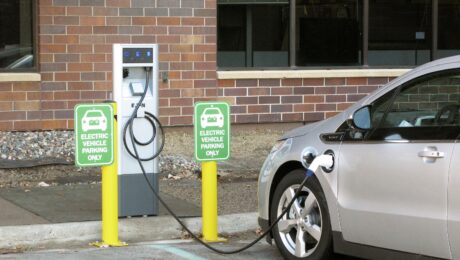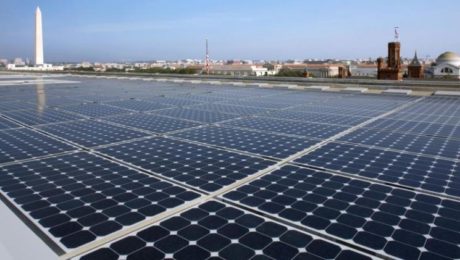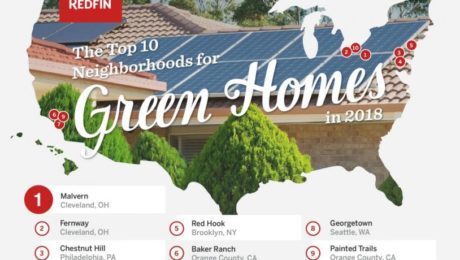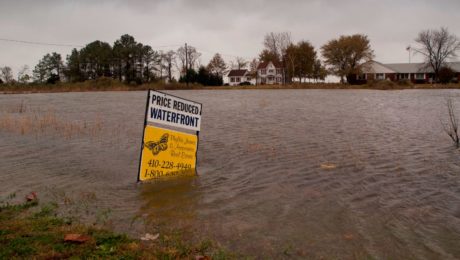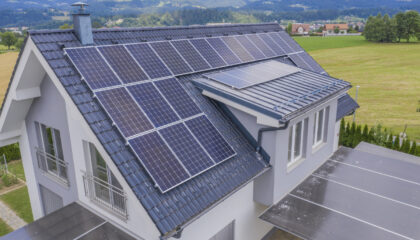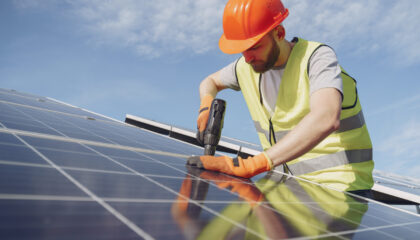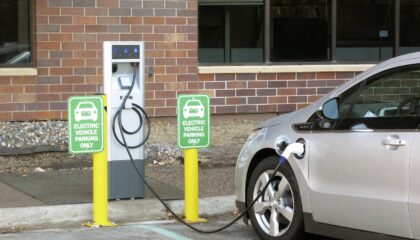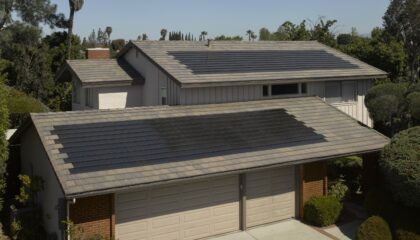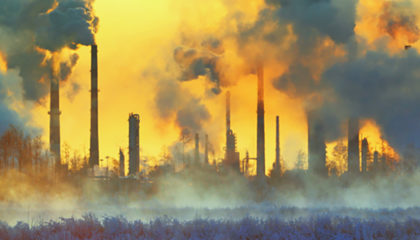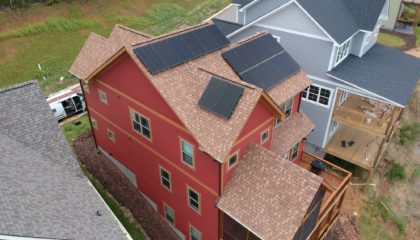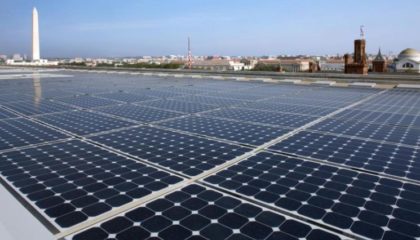EV Market Growth and Infrastructure Expansion
It really is a “Which came first? The chicken or the egg?” type of scenario. Do we jump in with both feet and flood the streets with EV’s or do we wait on the infrastructure expansion of hundreds of thousands of chargers to be installed?
Those of us that are in the market for our first electric vehicle often worry about range and charging options. We understand that the infrastructure isn’t nearly where it needs to be for longer trips. With EV sales numbers multiplying each year, we also understand that if the infrastructure doesn’t start expanding right now then it will become increasingly more difficult to find an available/open charging station. Recent projected numbers from leading automobile manufacturers show literally hundreds of new EV models hitting the market in the next 3-4 years.
Like a lot of things in the energy sector, solar energy not excluded, favorable policy will be necessary to make progress for EV infrastructure. Electric utilities, in general, see the gigantic opportunity before them to expand as the EV market grows. However, it seems many utilities are not eager to move forward with investments until the rubber hits the road. This hesitation to invest slows expansion and ultimately delays our transition towards electric vehicles. It will take effort on the consumer end to move forward. Pressure will need applied on utility commissions, political representatives, and communities.
To further complicate things, the declining fossil fuel industry is fighting with everything it has left to lobby against EV’s. The oil industry has requested additional fees for EV’s and lobbied to overturn subsidies for EV purchases, chargers, and infrastructure. Despite combustion engine vehicle bans in targeted cities throughout the world, the oil industry is still battling for a path forward. Our representation that is beholden to the oil industry will also stifle progress.
If you are interested in joining the effort to electrify our transportation systems here in the US, we encourage you to reach out to local groups already in the trenches. Many existing groups that are already out there trying to make a difference would welcome your support.
We have found that individuals with interest in EV’s and solar energy tend to be aware of climate change, and are active in reducing their carbon footprints. Many of our customers are already EV owners or soon will be. If an EV is in your future, we would love to talk to you about expanding your solar energy system or installing a new solar energy system that will cover your driving needs.
Read more:
https://www.politico.com/story/2019/09/16/oil-industry-electric-car-1729429
- Published in Climate Change, Policy
DC’s Ambitious Clean Energy Requirement
Recently, Washington D.C.’s city council voted unanimously to require the district to use 100% renewable energy by 2032. Additionally, all public transport vehicles and privately-owned fleets will be required to be emissions free by 2045. With the threat of climate change becoming more and more prevalent, this fast-tracked plan will hopefully set a precedent across the country. Quite a few cities have already set renewable energy goals, but D.C. has by far the biggest. There are only two statewide policies, in California and Hawaii, of becoming 100% renewable energy dependent. As we see federal regulations becoming more lax, it is inspiring to see so much change at the lower levels of government.
Much of the funding for this initiative will come from large utility companies who will be making payments into the Renewable Energy Development Fund. Some D.C. residents are already paying additional rates for using natural gas and electricity, which have been funding the REDF. Part of the funding will be allocated to low-income residents, as transitioning a home to clean energy can require more of an upfront cost.
With this push for clean energy, we are pleased to see a boom in solar energy. Washington D.C. mandated that at least 10% of its energy be from the sun by 2041. On the other side of the country, California has already implemented a requirement that every new construction build to include solar panels. There have been countless smaller solar subsidies in other areas that have progressed the industry; including North and South Carolina.
Read more:
- Published in Climate Change, Policy, Solar News
Green Neighborhoods
Green built housing, energy awareness, and conscious living are all very prevalent here in Asheville, NC which is why many of us choose to live here. I wanted to explore other neighborhoods that had similar values and found the Clean Energy Authority’s top ten neighborhoods for green homes.
Unexpectedly, three of the top ten neighborhoods were outside of Cleveland, OH. In these areas near Lake Erie, over 60% of the homes sold have green-built features. After a predominantly industrial past, this city has had implementations of reducing its carbon footprint since 2002, and even has a government funded climate change task force to promote change, awareness, and research.
Moving down the list, two more neighborhoods that lead in sustainability are just outside of Philadelphia, PA. The city is planning on reducing its carbon emissions 80% by 2015. Plans have been implemented for creating bike lanes, storm water management, and exploring solar power already. Like the Ohio cities, many homes in this area are very old and people want to do everything they can to make their beautiful and historic neighborhoods efficient and earth-friendly in the coming years.
Other top cities that made this list are in Orange County, CA, Brooklyn, NY, and Seattle, WA. Every neighborhood that made the cut has over 55% of homes built with green features and range from median home prices of just $212,250 to over $1,414,000- showing that green living is attainable not just for the elite.
Here is the list of the top 10 Green Built Neighborhoods according to the Clean Energy Authority:
- Malvern (Cleveland, OH)
- Fernway (Cleveland, OH)
- Chestnut Hill (Philadelphia, PA)
- Spruce Hill (Philadelphia, PA)
- Red Hook (Brooklyn, NY)
- Baker Ranch (Orange County, CA)
- Echo Ridge Village (Orange County, CA)
- Georgetown (Seattle, WA)
- Painted Trails (Orange County, CA)
- Mercer (Cleveland, OH)
To read more, Click Here for details of the cities listed above.
- Published in Climate Change
Coastal Flooding Projected To Rise
A June 2018 study released by the Union of Concerned Scientists, regarding chronic coastal flooding, projects that flood levels will rise drastically within the next 30 years directly caused by rising sea levels due to increasing carbon emissions.
Already many areas are seeing routine coastal flooding that did not used to occur as recently as 1970. Although this has been an inconvenience, it has not become a major problem… yet. According to this study, by 2045 over 300,000 homes valuing roughly $117.5 billion dollars are at risk of constant flooding. These homes provide shelter for about 550,000 people and provide the country with nearly $1.5 billion a year in property tax revenue. In addition, there are 14,000 commercial properties valued at $18.5 billion that would be affected.
If these projections of chronic flooding aren’t correct, these homes will lose much of their value, become difficult to insure, and eventually be unlivable altogether. This huge change would create regional marketing crises, as well as negatively impact local real estate investors and bankers.
Although the effects climate change will have on our society are scary, it is important that we are staying diligently aware so that we can make changes, within our power, to slow the process. Clean energy is a huge factor in reducing carbon emissions and can easily be done on an individual level. Average residential homes powered with a solar system will prevent 5,760 pounds of carbon dioxide pollution a year from entering the atmosphere. Making sure we are using energy efficient appliances and vehicles are other steps we can personally take to slow the rapid effects of climate change.
To see specific data about flooding projections you can view this interactive map.
- Published in Climate Change, Solar Energy
Environmental Injustice
In late 2017, the Clean Air Task Force and NAACP released results of a study that examined how oil and gas facilities affected air quality in African American predominant communities. There was overwhelming data to support that people in these areas are significantly more affected by airborne pollutants because of their proximity to oil refineries, power plants, hazardous waste facilities, and other major polluters.
Environmental injustices such as this typically do affect other minorities as well, such as women and those living in poverty. In addition, inequalities have a tendency of stacking as pollution can cause health issues that cannot be properly cared for due to lack of finances and healthcare.
In the US, pollution from the natural gas industry causes 750,000 childhood asthma attacks, 500,000 missed school days, 2,000 adult asthma related emergency room visits, and 600 hospital admittance’s. Every year, the oil industry creates over 9 million tons of methane and other chemicals. Minorities do make up the bulk of these numbers as they are typically in most direct contact with the pollutants. These statistics only reflect the harm caused by air pollution, the numbers rise even more when we factor in water and soil contamination.
Major social change is needed to fight these environmental injustices. If these topics are important to you, it is imperative that you take action. Speaking with your government representatives, standing up against new oil and gas facilities, and reducing your own pollution output are all simple steps that can make a big difference.
To read the report in its entirety, Click Here.
- Published in Climate Change, Policy
Trash to Solar
As the need to distance ourselves from fossil fuels becomes more urgent due to climate change and pollution in general, solar power is emerging as a leading alternative. It can be scaled to be used by individuals or large utilities; and best of all- it’s renewable. However, large scale solar farms require large tracts of land that have long and regular periods of sunlight. Suitable areas can usually be found in many rural settings and deserts, but transferring that energy over lengthy power lines to more populated areas can be expensive and inefficient.
A new trend is emerging that seems like a promising answer to this inconvenience – building on retired landfills! When a landfill is full it is covered with a polyethylene cap, a thin layer of soil, and finally grass. Despite it’s more pleasing aesthetics, this brownfield ground is still mostly unusable as it is unstable and not suitable for building large structures. Because of the gasses and toxins emitted by the covered landfill the growing of crops is also not a viable option. However, this acreage is perfect for large scale solar farms. Ballasted anchors are used to stabilize the solar array to avoid penetrating the landfill cap. This specialized racking system allows for thousands of solar panels to be installed on this otherwise unusable land; producing a lot of clean, renewable energy.
Landfills are typically built outside of, but close to, city limits and already have access to the power grid. This makes transporting energy for use in more densely populated areas much easier. Right now, there is an estimated 10,000 capped landfills in the US alone, and that number is only growing. The construction of large solar farms would not only positively impact the environment, it would create thousands of well-paying and sustainable jobs on land that is otherwise sitting unused.
- Published in Climate Change, Solar Energy, Solar News, Solar Technology
- 1
- 2

